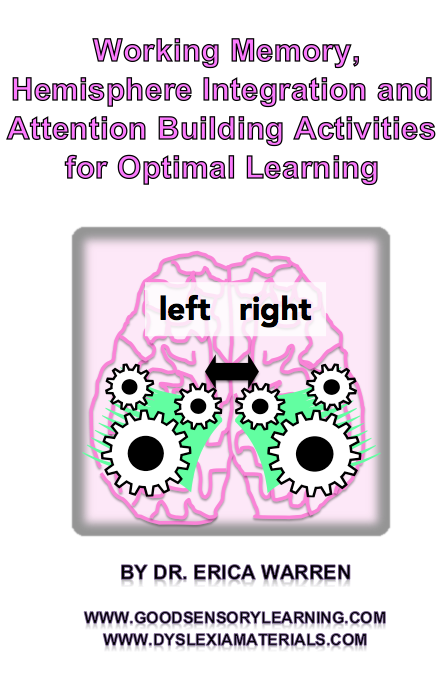Successful learners are fully engaged, can maintain attention and they activate both hemispheres of their brain. However, many young learners go through their daily classroom activities without being fully conscious of the task at hand. They are constantly distracted by external stimuli as well as their own internal thoughts that take them on “little trips” outside of the classroom. Although their bodies are present, their minds are elsewhere. What’s more, when these students eventually become consciously involved in the classroom, many have missed important instruction and they may only be activating the dominant side of their brain. So, for example, if a student is only using the right hemisphere, reading can become a difficult task, as for mostpeople, the left hemisphere of the brain is dominant for language. For students that fall into this profile, learning can become difficult, frustrating and taxing.
What Can We Do to Help Students Improve Memory, Activate Their Whole Brain and Improve Attention?
The key to developing these skills lies in improving three areas of cognition:
- Working memory
- Hemispheric Integration
- Attention
What is Working Memory?
According to Google definitions, working memory is the part of short-term memory that is concerned with immediate, conscious, perceptual and linguistic processing. The development of working memory is fundamental to helping students to be present and mindful while in the classroom. It also helps them to encode information as well as perform mental manipulations.
What is Hemispheric Integration?
Hemispheric Integration is the activation of both the left and right hemispheres of the brain. When hemisphere integration is poor, there is decreased communication between the right and left sides of the brain. Electrically, the two hemispheres are not communicating, there is an imbalance between the right and left sides of the brain or one hemisphere is activated, while the other remains largely inactive. Multisensory integration is essential for almost every activity that we perform because the combination of multiple sensory inputs is essential for us to comprehend our surroundings. Dan Seigal (see link below) suggests, "A healthy and productive mind “emerges from a process called integration." Both Dennison (see link below) and Hannaford (see link below) offer physical activities that integrate the brain through movement, but this publication offers quick printable activities that can also activate both hemispheres and train the brain to be mindful and present for improved memory and processing.
What are Attention Building Activities?
Attention building activities require students to maintain attention in order to complete the exercise. Without being fully focused, the drills are virtually impossible. If instructors or learning specialists slowly increase the number of activities that the student completes in a single session, they will be training the brain to concentrate over longer and longer periods of time.
Why I Created and Use These Activities with My Students?
We live in a society that is constantly bombarding children with stimuli to the point that when there is no stimulation, many kids get bored. In addition, many children do not know how to activate their own cognition and take control of their own thought processes. I created these fun, game-like activities to help students become mindfully present, develop working memory, engage both hemispheres of the brain and improve the capacity to sustain attention. Many of the activities were created with the Stroop Effect in mind. The effect is named after John Ridley Stroop who first researched and published the effect in England in 1935. Later, his findings inspired a test, The Stroop Test. The Stroop Test is purported to measure selective attention, cognitive flexibility, processing speed, and executive functions. If you would like to learn more about these activities as well as see some sample pages, Click Here
Dr. Erica Warren is the author, illustrator and publisher of multisensory educational materials at Good Sensory Learning and Dyslexia Materials. She is also the director of Learning to Learn, in Ossining, NY. To learn more about her products and services, you can go to www.goodsensorylearning.com, www.dyslexiamaterials.com, & www.learningtolearn.biz





